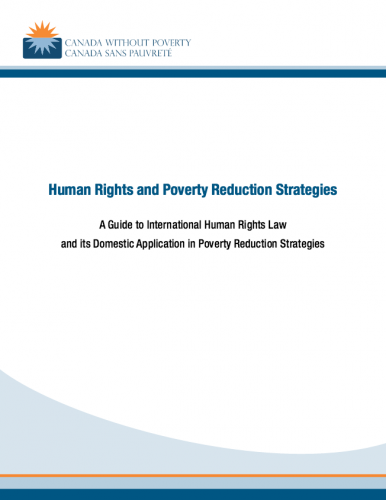A Guide to International Human Rights Law and its Domestic Application in Poverty Reduction Strategies
Who should read this guide?
Every day in communities across Canada, important work is being done to improve the lives of people living in poverty. The purpose of this Guide is to introduce the people doing this work — from policymakers to frontline workers — to the human rights approach to poverty reduction.
If you are a provincial, territorial, municipal or First Nations official, and you are in the position to advance policies that address poverty and ensure all of your constituents enjoy a good quality of life, this Guide is for you. It helps you understand your human rights obligations and explains how to incorporate a human rights approach into provincial, territorial and municipal poverty reduction plans.
If you are a frontline worker, you see the impact of poverty on a daily basis. You may be a social worker, health care worker, shelter worker or anyone else who works with low-income clients. This Guide is also for you. It helps you understand human rights issues and explains how they are relevant to your everyday work.
Table of Contents
- Introduction
Who should read this Guide?
What you will learn from this Guide? - The Human Rights Approach
What are human rights and where do they come from?
How are human rights relevant to my work?
What rights are important for people living in poverty?
What is the human rights approach to poverty reduction?
Why is the human rights approach the right approach? - Putting the Human Rights Approach into Action
Identifying people living in poverty
Incorporating international human rights standards
Consulting people who live in poverty
Promoting substantive equality and non-discrimination
Setting goals and establishing timelines
Monitoring progress
Ensuring accountability - Checklist
Theme





